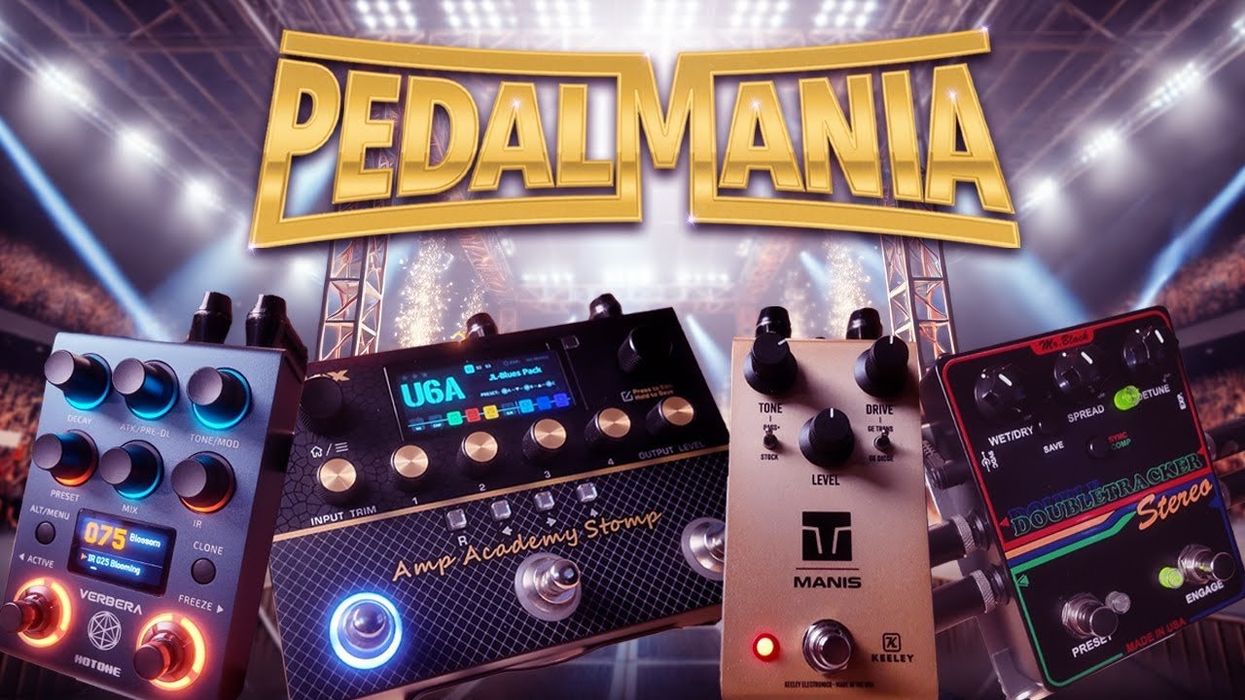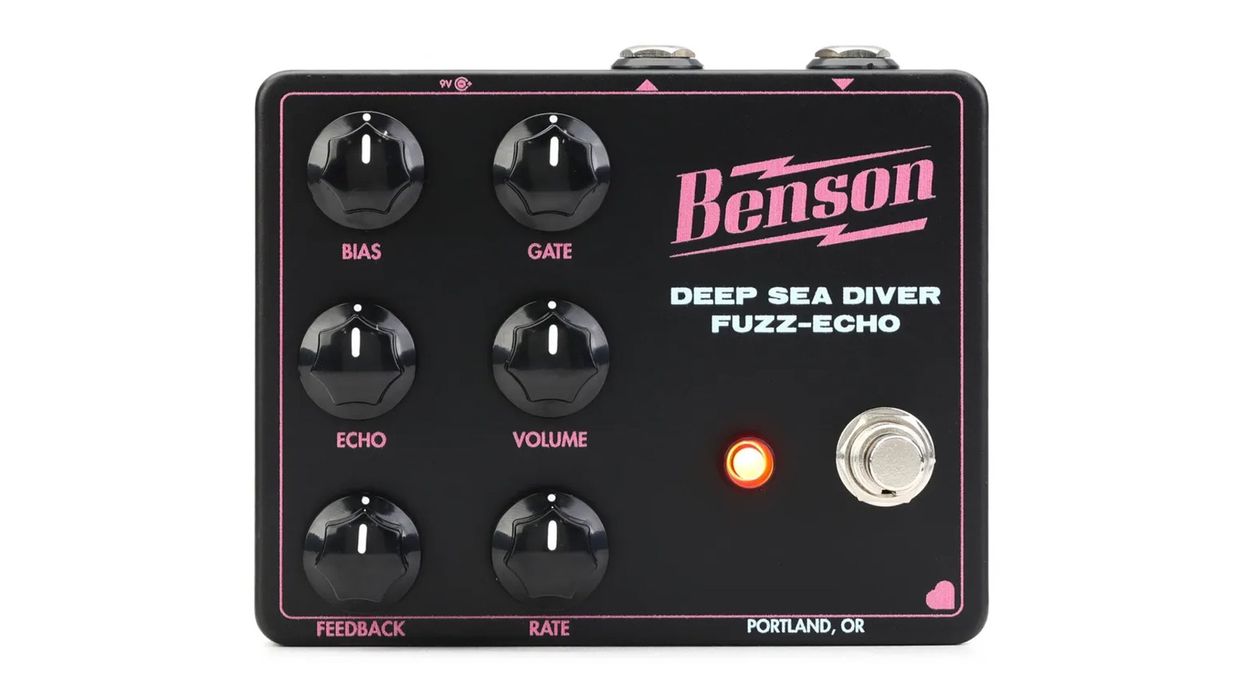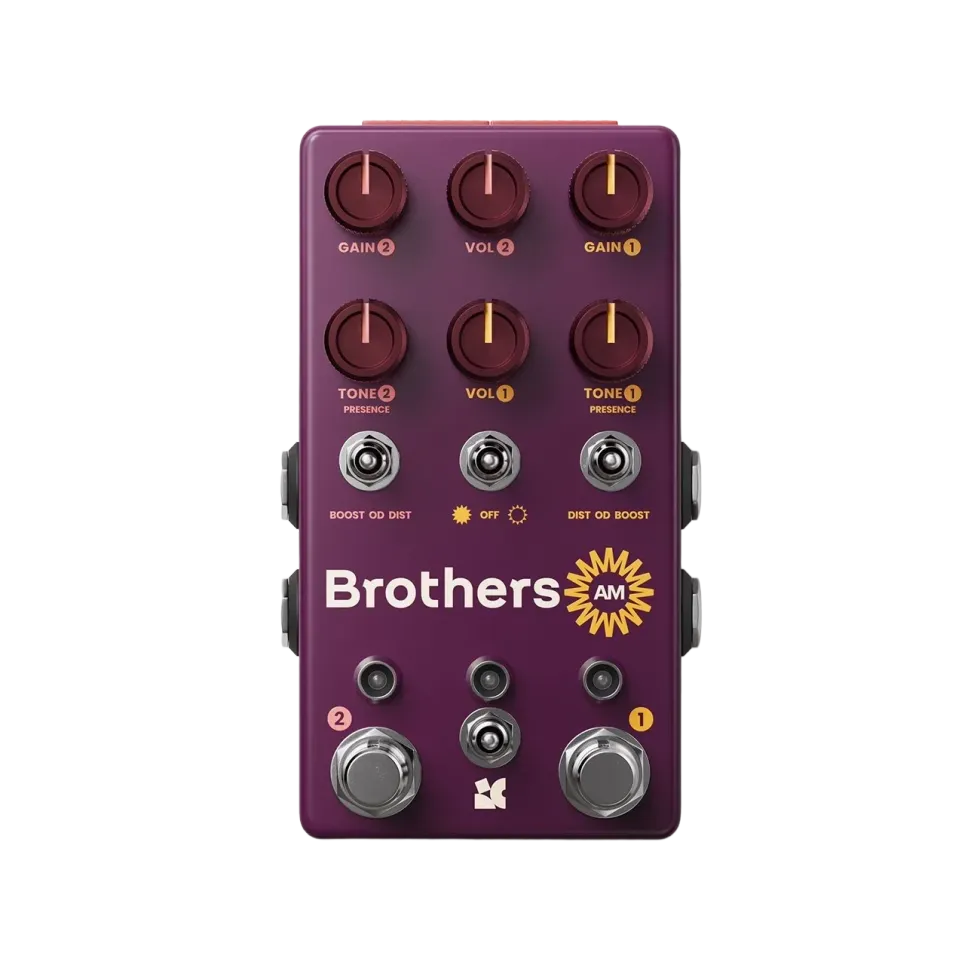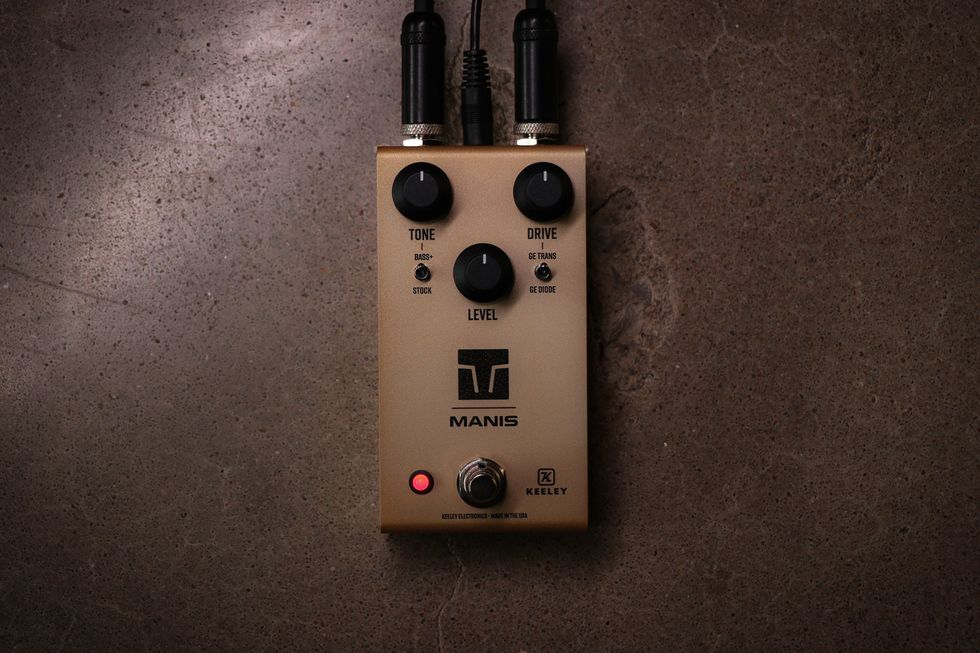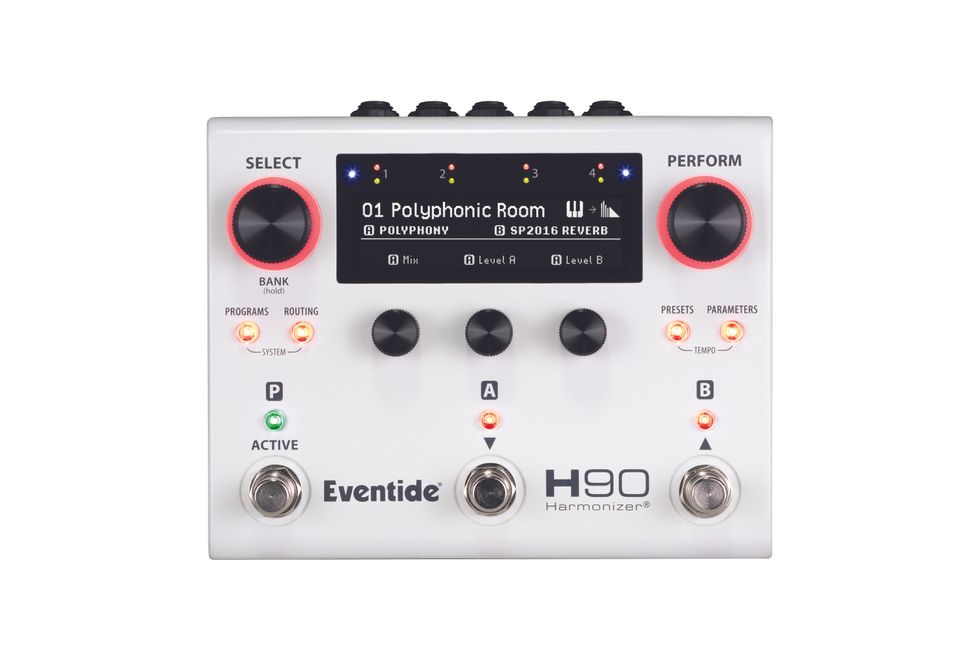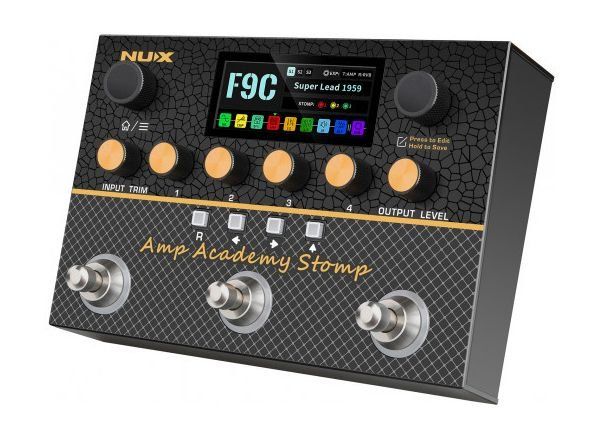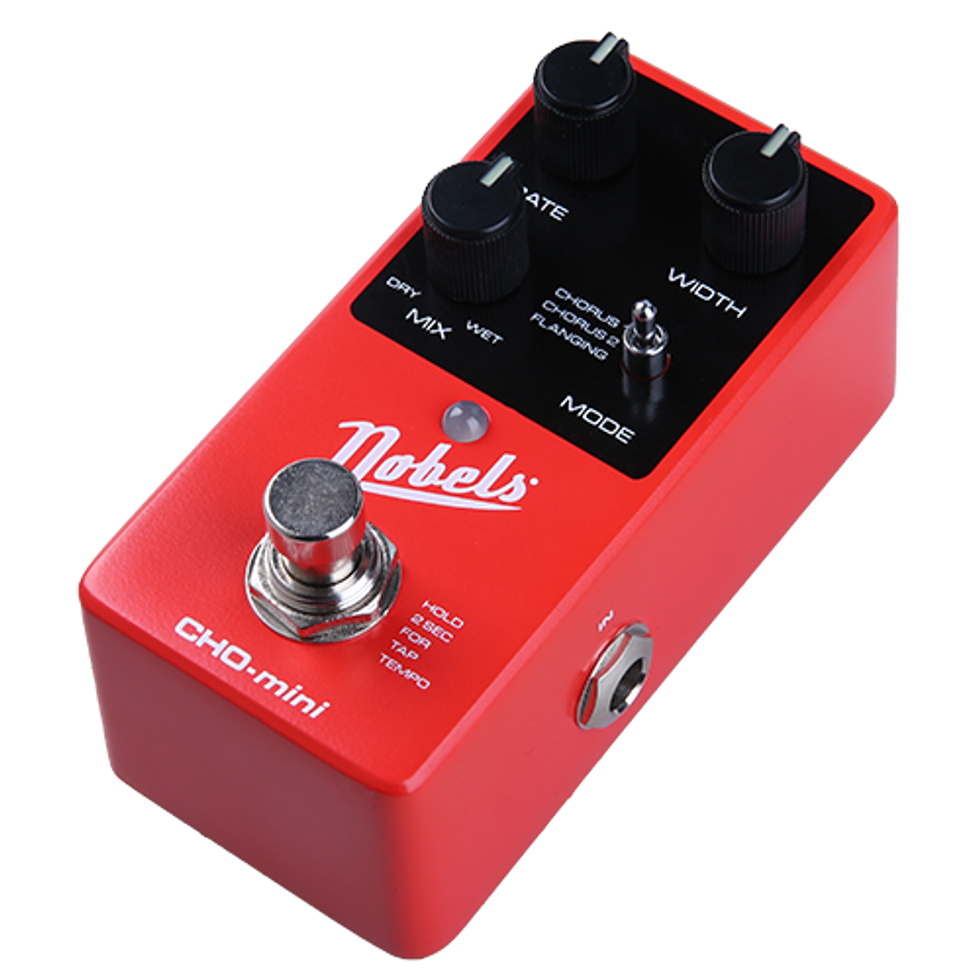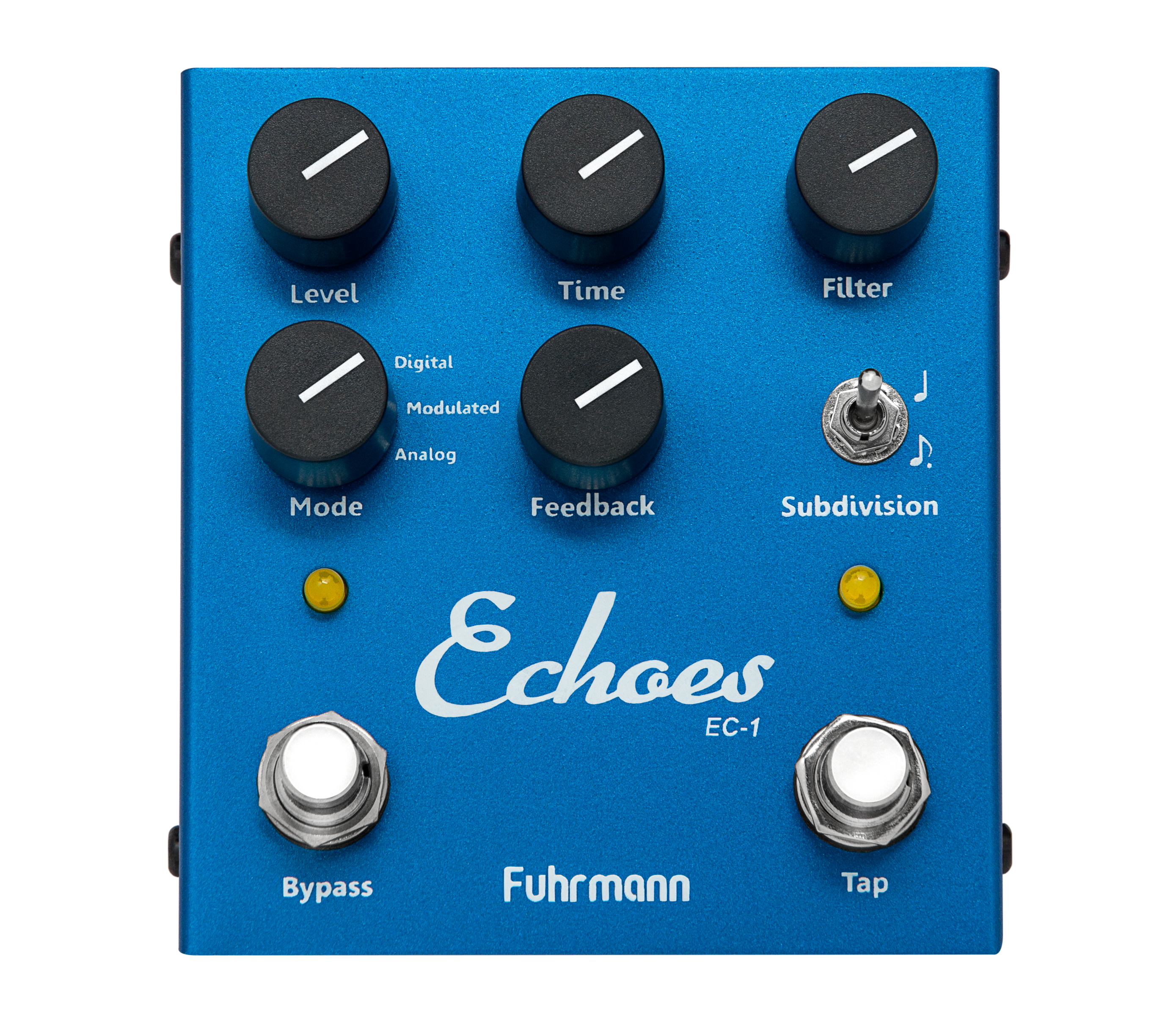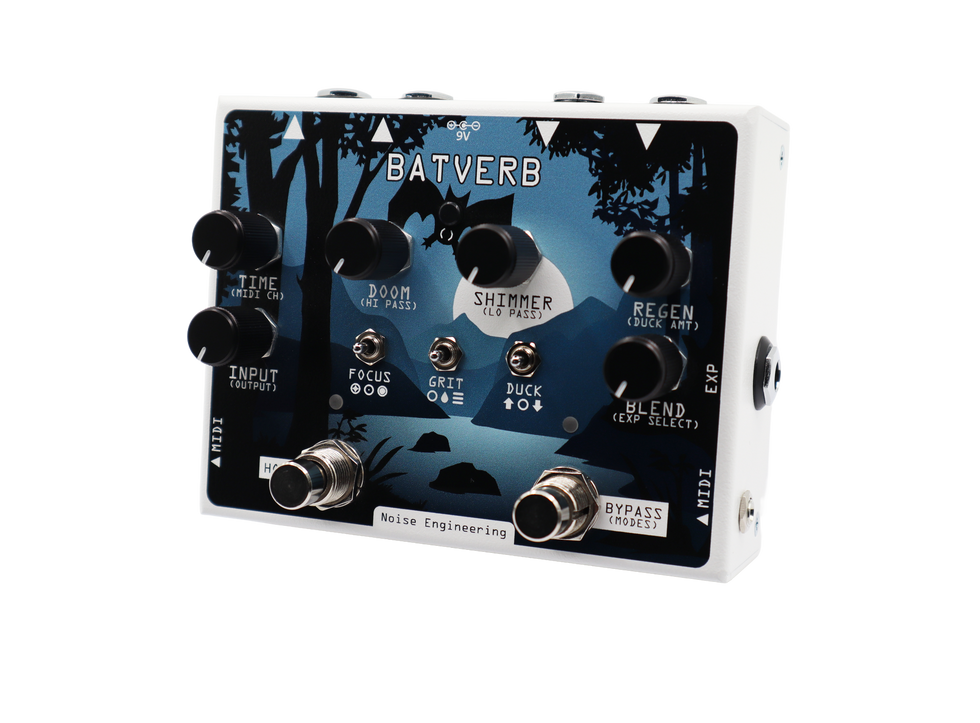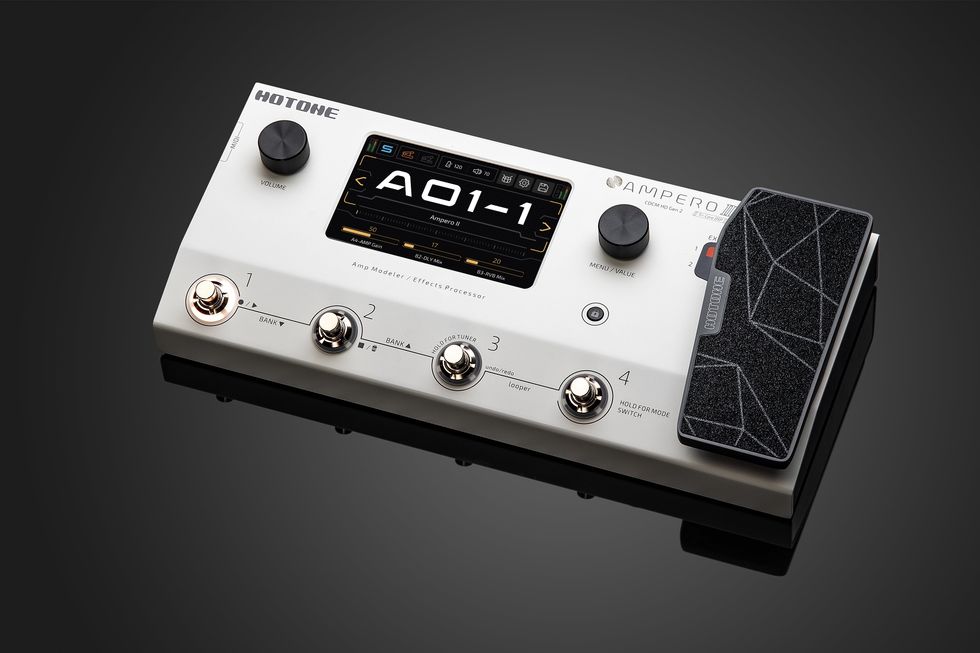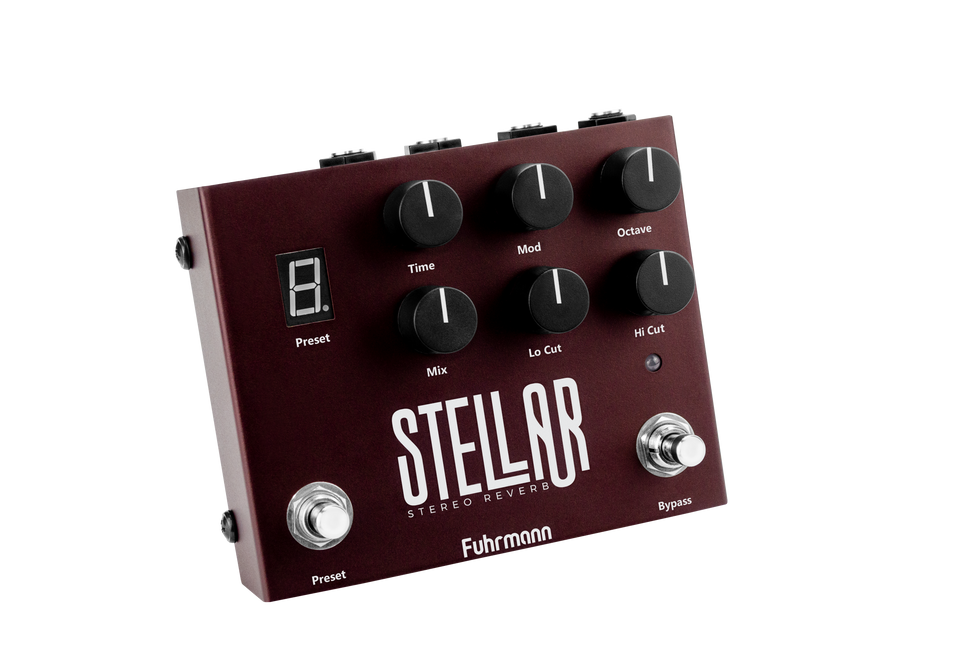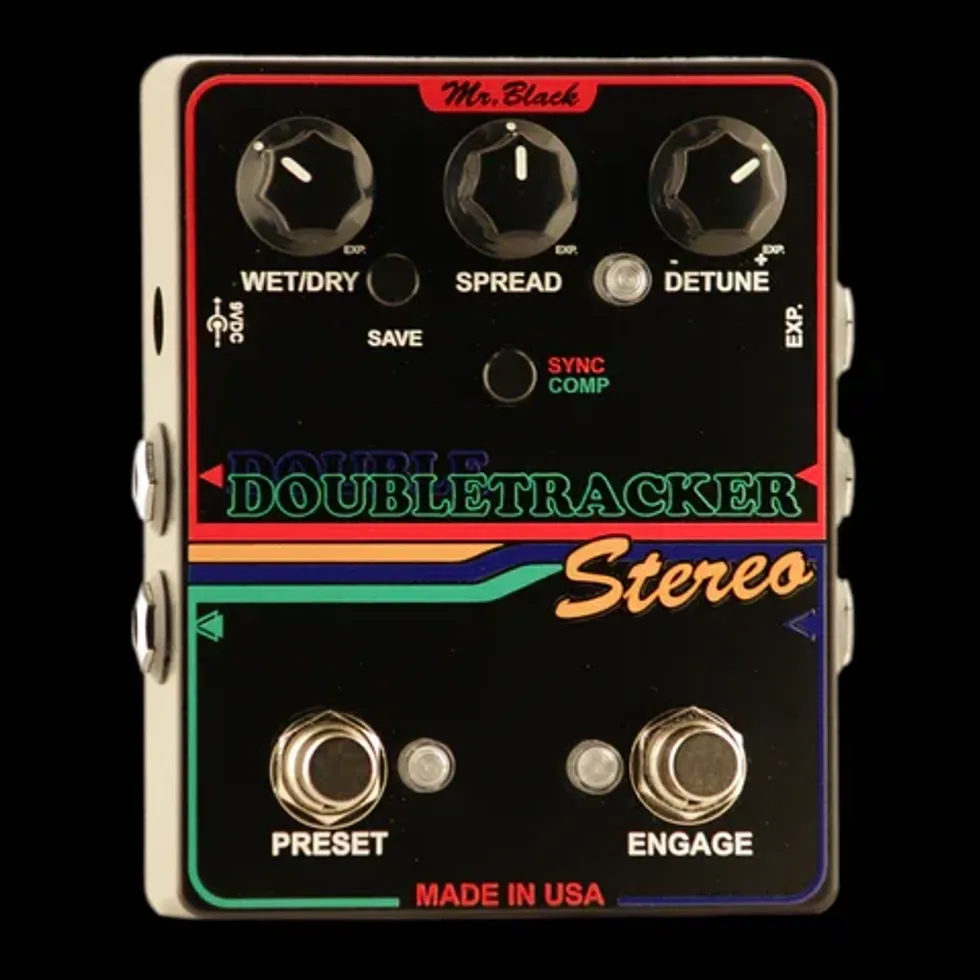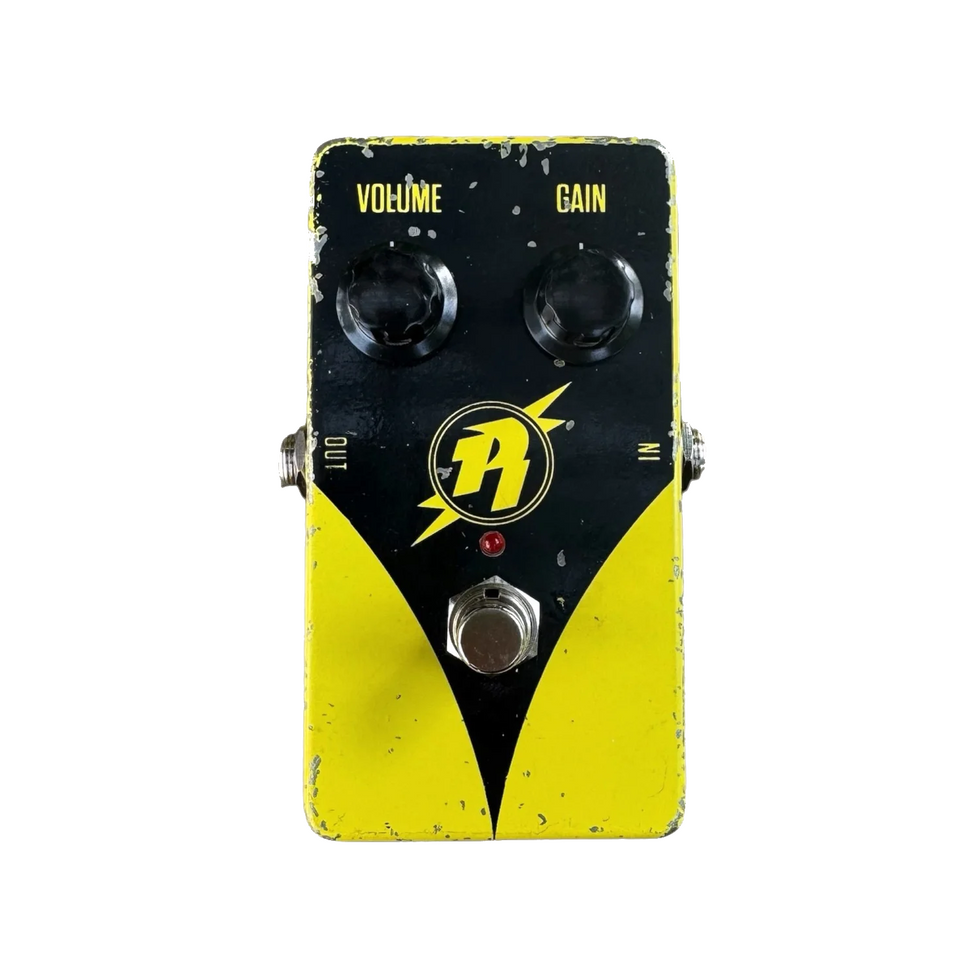The silhouette of the new Six Gun HPP is, at this point, a familiar shape—and arguably a classic. It's the foundation for many different Reverend models and clearly a versatile platform for evolution and experimentation. The updated pickup configuration and other new features of Reverend's offset workhorse make the $1,099 Korea-built Six Gun an impressive performer for the price.
Horse P-Power
If you haven't yet decoded the Six Gun's handle, the HPP stands for humbucker/P-90/P-90. The pickups are designed by Reverend. An alnico 5 HA5 humbucker (wound with 43 AWG wire) registers DC resistance readings of 12.65k ohms, while each of the alnico 5 9A5 P-90s register 7.48k ohms. They're all routed through a master volume control with a treble-bleed network, a tone control, and Reverend's useful passive bass contour, which rolls off low end. A 5-way selector switch opens up the possibility of combined bridge/middle and middle/neck pickup combos.
Reverend Six Gun HPP Review
Recorded with Reverend Six Gun, into a Friedman Mini Dirty Shirley head, recorded via a Mesa CabClone IR+ (2x12 cab IR with Celestion Blue and G12H speakers).
Clip #1 — Cleanish: From bridge to neck in all five positions with the Bass Contour control fully clockwise. Then from neck to bridge with the control fully counter-clockwise, then briefly back fully up on the bridge pickup to finish. All on the Friedman's low-gain setting.
Clip #2 — Crunch: Bridge then neck, on the Friedman's medium-gain setting.
Clip #3 — Driven: Bridge pickup, all controls on full; then neck pickup at Bass Contour minimum, then maximum. All on the Friedman's high-gain setting.
The body is crafted from solid korina, carved with rib and forearm contours, and our test model was dressed in Reverend's super-cool black-to-green avocado burst finish with white top binding. (Midnight black, coffee burst, and chronic blue finishes are also available). The guitar weighs around 8.2 pounds, which some might consider heavy, but it doesn't feel like a boat anchor, by any means.
Reverend has been hip to roasted maple for a while, and it is used here for the bolt-on neck, which is shaped into a relatively slim, rounded-C profile and capped with a roasted maple fretboard that's been sliced from the neck blank and re-affixed after installation of the dual-action truss rod. The process eliminates a skunk stripe on the back of the neck, giving the Six Gun a nice handcrafted look. The 25 ½" scale makes the neck feel spacious. And the 22 medium-jumbo frets, which are nicely dressed at the crowns, make it feel smooth and suited to string bending. A few frets felt a little rough at the fretboard edges, but altogether, the neck feels and plays great.
Crafty use of the bass contour control can transform the character of each pickup.
Our review Six Gun HPP arrived well setup and more-or-less in tune right out of the included, two-tone, teardrop hardshell case. It also stayed in tune after a long opening round of playing, including moderate vibrato use. The vibrato, by the way, is a Wilkinson WVS50 IIK two-point vibrato that delivers smooth, even action and great return-to-pitch stability. Tuners are Reverend's locking Pin-Lock design, and the nut's made from synthetic bone. There's also a retainer bar to help maintain tension on the high-E, B, and G strings.
Shoot Out at the Pickup Corral
In addition to being exceedingly playable, the Six Gun HPP offers a wide, adaptable sonic palette. I played the Six Gun through a Marshall-style Friedman Small Box and a tweed Deluxe-style 1x12 combo, and the HPP was a great match for both. The bridge humbucker is a rock machine at heart, with lots of grunt and sizzle that adds beef and presence to overdriven lead excursions. But it cleans up gracefully, too, with volume attenuation, and has a touch of mid-forward, cocked-wah tonality that brims with attitude in clean and dirty applications. The P-90s are also capable rockers—especially when driving an amp turned up to loud and dirty levels. They add a little more grit and bite to the brew, too, which broadens the guitar's character considerably.
All five pickup positions sound great with the bass contour knob fully up, but crafty use of the control can transform the character of each pickup. Wind it back a bit and the humbucker takes on a brighter, slightly thinner, more P-90-ish character that's still thicker than a coil-split humbucker. The same setting gives the P-90s characteristics of a fat-Strat pickup, and in this mode they can generate funky Knopfler-esque tones from the 2nd and 4th positions, lithe rhythm tones, and nice jangle and twang sounds.The Verdict
Well designed, well made, and well setup right out of the case, the Six Gun HPP impresses not only for overall quality but for sonic versatility as well. It's an easy and fast-feeling instrument, and well worth investigating for its crossover appeal and chameleonlike tone capabilities.






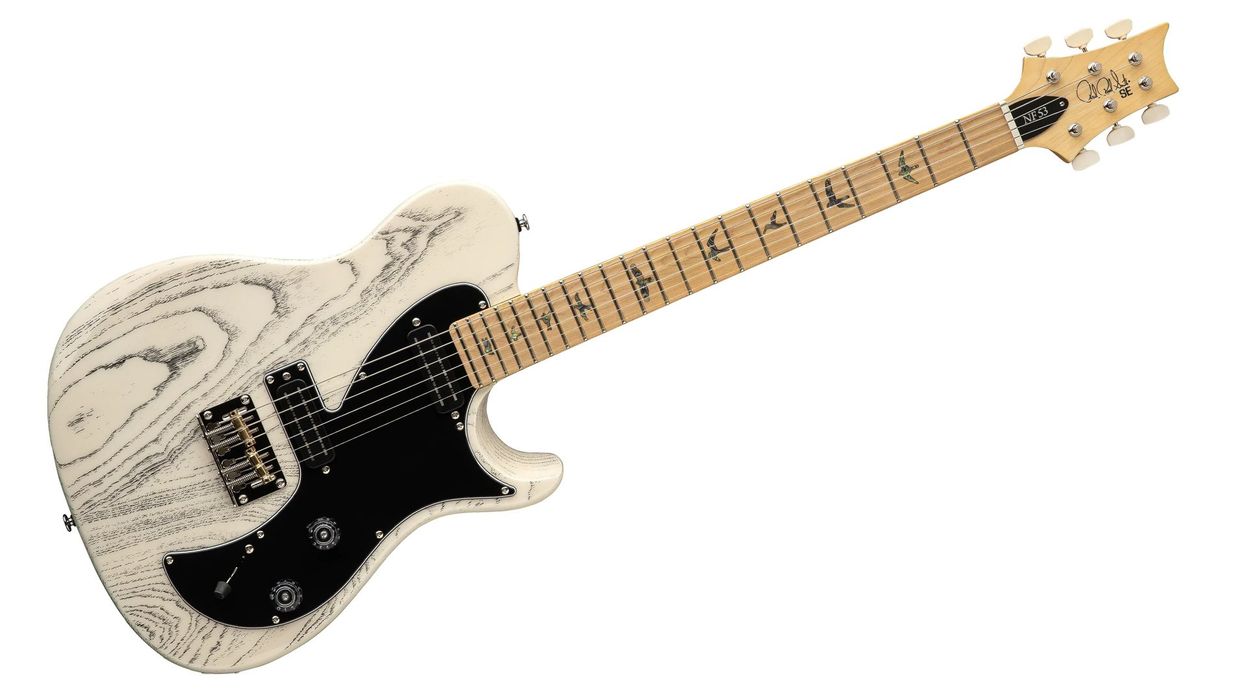
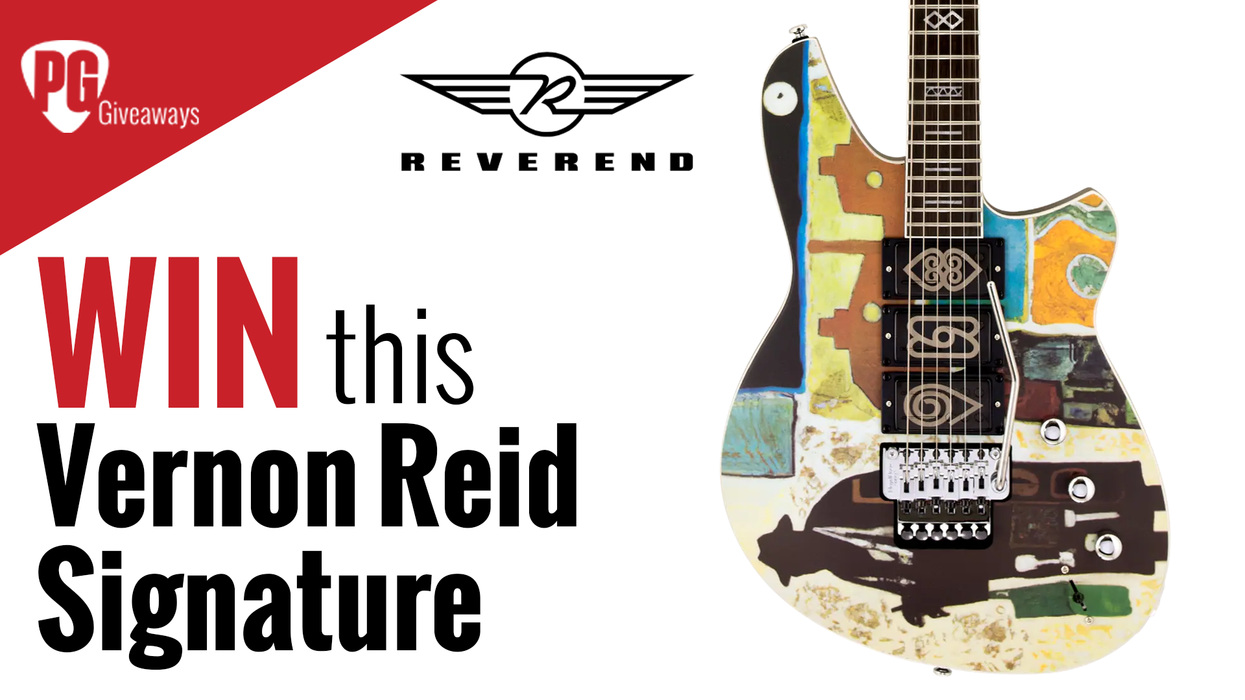

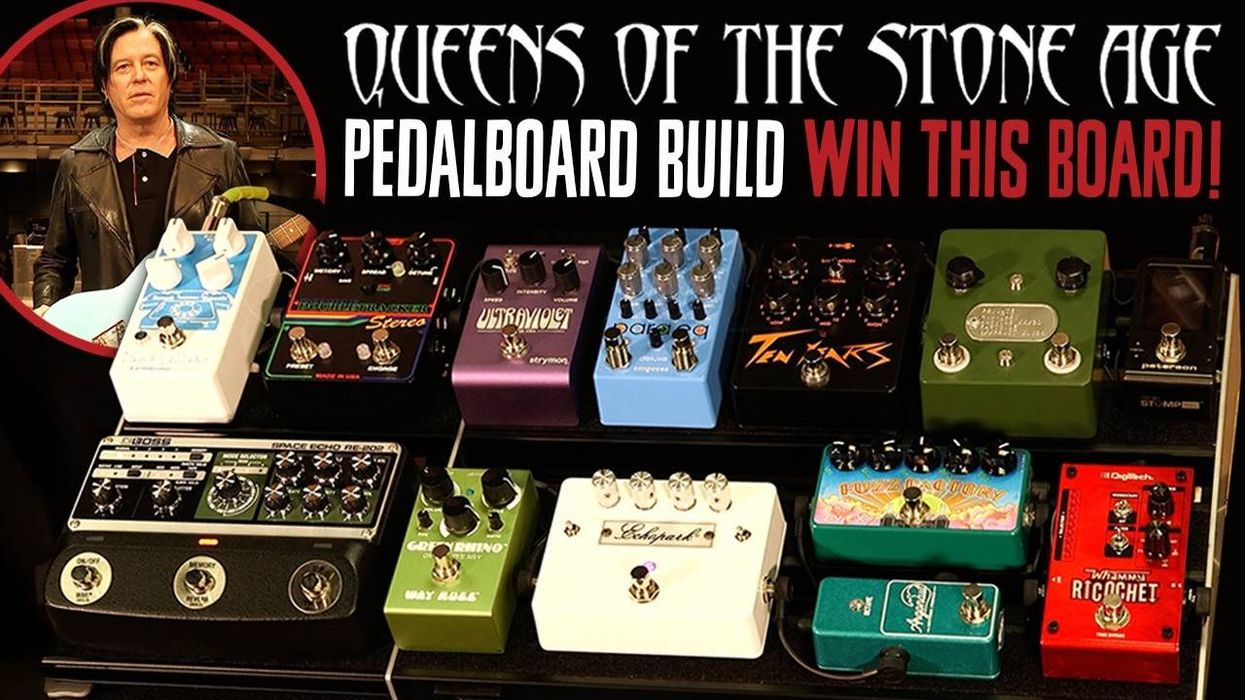
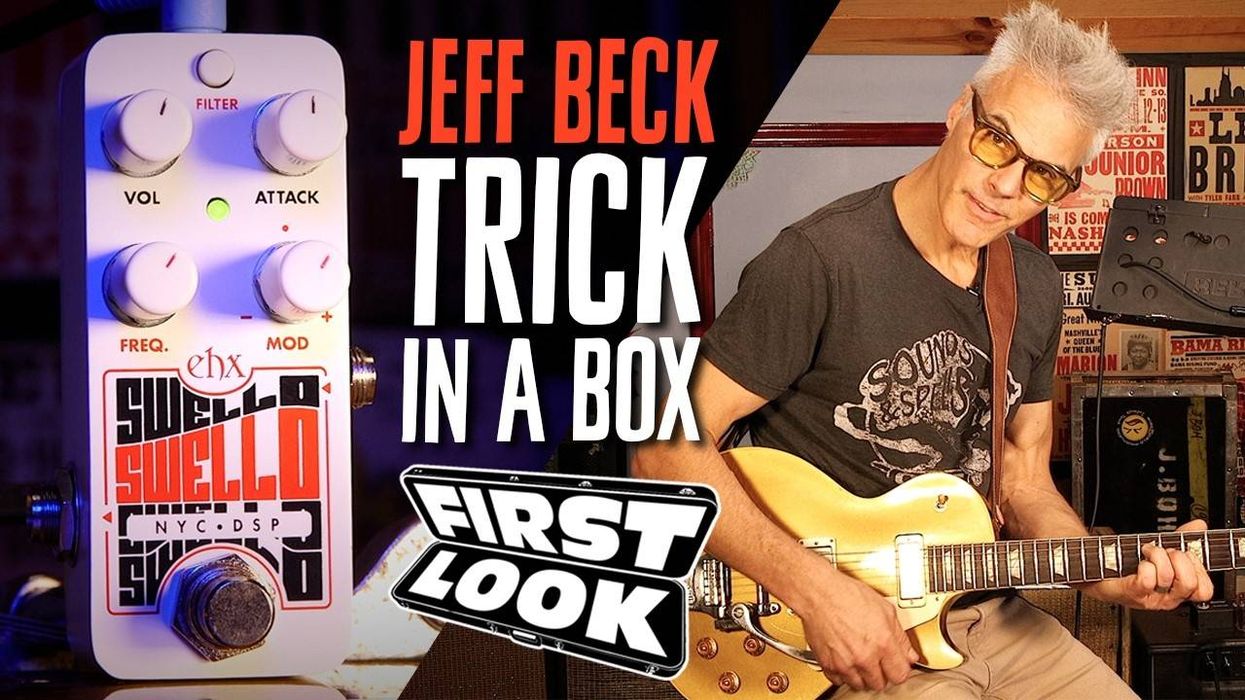
![Devon Eisenbarger [Katy Perry] Rig Rundown](https://www.premierguitar.com/media-library/youtube.jpg?id=61774583&width=1245&height=700&quality=70&coordinates=0%2C0%2C0%2C0)

